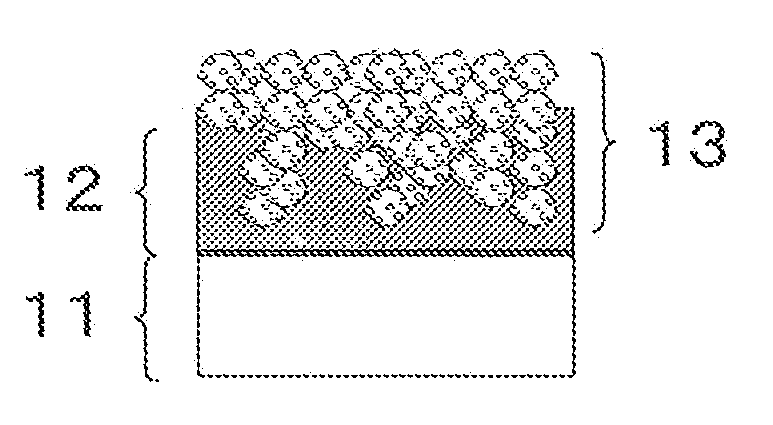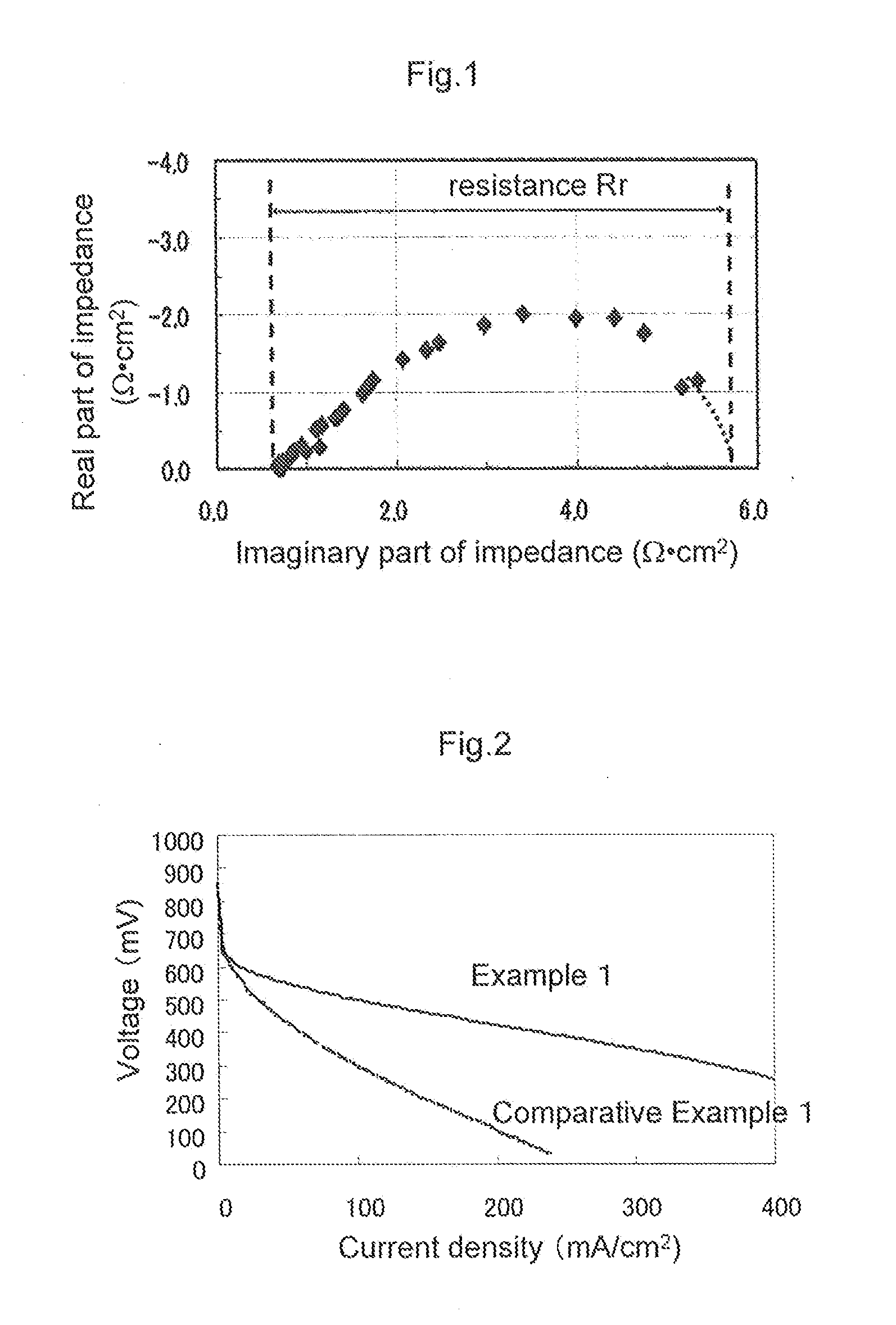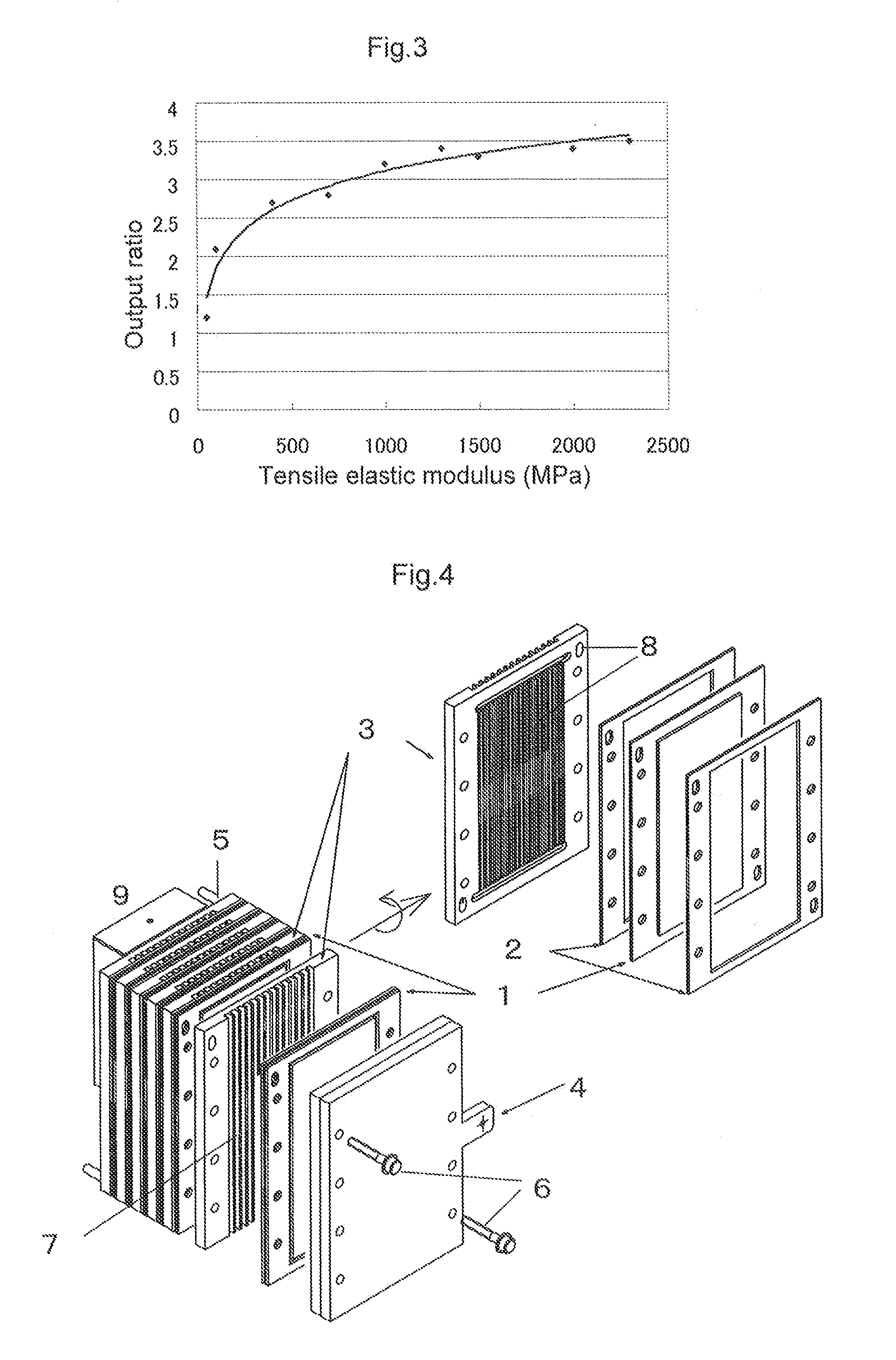Film electrode composite element and production method therefor, and fuel cell
- Summary
- Abstract
- Description
- Claims
- Application Information
AI Technical Summary
Benefits of technology
Problems solved by technology
Method used
Image
Examples
example 1
[0207]10 g of polymer A as a polymer material having an ionic group, 60 g of N-methyl-2-pyrrolidone as a plasticizer, and 40 g of glycerin were put into a container, and they were stirred until to be homogeneous to form an interface resistance reducing composition A. A value of Y / X representing the temperature dependency of viscosity change of the interface resistance reducing composition A was 0.08. This interface resistance reducing composition A was applied onto each of the foregoing electrode A and electrode B so as to be 3 mg / cm2, and heat-treated at 100° C. for 1 minute. These electrodes were cut so as to have an electrode area of 5 cm2.
[0208]Next, these electrodes with an interface resistance reducing composition A were laminated in such a way that two interface resistance reducing compositions A are opposed to the electrolyte membrane A, and the resulting laminate was hot pressed at 100° C. for 1 minute at a pressure of 5 MPa to obtain an membrane electrode assembly. The pre...
example 2
[0214]10 g of polymer A as a polymer material having an ionic group, 40 g of N-methyl-2-pyrrolidone as a plasticizer, and 40 g of glycerin were put into a container, and they were stirred until to be homogeneous to form an interface resistance reducing composition B. The temperature dependency of viscosity of the interface resistance reducing composition B is shown in FIG. 8. A value of Y / X representing the temperature dependency of viscosity change of the interface resistance reducing composition B was 0.05. This interface resistance reducing composition B was applied onto a release base material so as to be 3 mg / cm2, and heat-treated at 100° C. for 1 minute to prepare a release sheet with an interface resistance reducing composition. This release sheet with an interface resistance reducing composition was overlaid on each of the electrode A and the electrode B, and the resulting each overlaid one was hot pressed at 100° C. for 1 minute at a pressure of 2 MPa, and each release pape...
example 3
[0217]A release sheet with an interface resistance reducing composition B of Example 2 was prepared. This release sheet with an interface resistance reducing composition B was cut into squares, 2.4 cm on a side, and the cut release sheet was bonded to both sides of the electrolyte membrane A in such a way that the interface resistance reducing composition B come into contact with the electrolyte membrane A and the release sheets on both sides are opposed to each other, and the resulting bonded one was hot pressed at 60° C. for 1 minute at a pressure of 1 MPa, and each release base material was peeled off. Next, the electrode A and the electrode B, respectively having an electrode area of 5 cm2, were overlaid on a layer consisting of the interface resistance reducing compositions provided on both sides of the electrolyte membrane, and the resulting overlaid one was hot pressed at 100° C. for 1 minute at a pressure of 2 MPa to obtain an electrode with an interface resistance reducing ...
PUM
| Property | Measurement | Unit |
|---|---|---|
| Temperature | aaaaa | aaaaa |
| Temperature | aaaaa | aaaaa |
| Temperature | aaaaa | aaaaa |
Abstract
Description
Claims
Application Information
 Login to View More
Login to View More - Generate Ideas
- Intellectual Property
- Life Sciences
- Materials
- Tech Scout
- Unparalleled Data Quality
- Higher Quality Content
- 60% Fewer Hallucinations
Browse by: Latest US Patents, China's latest patents, Technical Efficacy Thesaurus, Application Domain, Technology Topic, Popular Technical Reports.
© 2025 PatSnap. All rights reserved.Legal|Privacy policy|Modern Slavery Act Transparency Statement|Sitemap|About US| Contact US: help@patsnap.com



